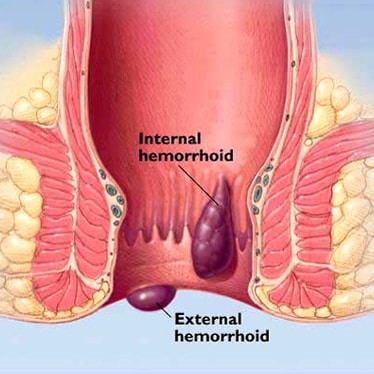Piles Treatment Through Ayurveda
With changing diet habits and lifestyle, the prevalence of non-communicable diseases has overcome the prevalence of acute contagious diseases. Amongst the non-communicable diseases, ano-rectal disease has emerged as a burning issue.
Sedentary mode of living, increased intake of spicy and salty foods, increased obese population has made ano-rectal disease as an inevitable event. Piles/Hemorrhoids is a classical ano-rectal disease which prevails as commonest problematic issues for most of the adults.
With many modern treatment methods invented for Piles treatment, the classical way of treating piles recommended by Ayurveda is still effective.
What is Piles?
Piles/Haemorrhoids is one of the common ano-rectal disease affecting 4.4% of the world population. Hemorrhoids is made up of two Latin words ‘Haima’ meaning blood and ‘Rhoos’ meaning oozing. So in literal sense hemorrhoids means bleeding. On the other hand, the word piles is derived from Greek word ‘Pila’ meaning ball like swelling.
Piles is understood as the sliding of anal cushion abnormally due to straining. Anal cushion includes blood vessels, smooth muscles and connective tissues present in the submucosal layer of anal canal. Piles treatment is most effective in Ayurvedic way, so instead of other allopathic surgery.
Factors causing Piles
- Hereditary
- Straining
- Diarrhea
- Constipation
- Low fiber diet
- Pregnancy
- Carcinoma rectum
Classification of Piles
On the basis of position piles is divided into two types:
- Internal piles (internal Hemorrhoids)– Swelling present above the dentate line in the anal canal. Painless bleeding is observed during defecation.
- External piles (External Hemorrhoids) – Swelling present below the dentate line in the anal canal. Painful bleeding is observed during defecation.
The other version of classification is as follows:
- First degree piles – Piles mass present within which may bleed but does not come out
- Second degree piles – Piles mass that comes out during defecation but returns back spontaneously.
- Third degree piles – Piles mass that come out during defecation and replaced back only manipulation.
- Fourth degree piles – Piles that are permanently prolapsed.
Clinical features
- Bright, red and fresh bleeding during defecation
- Prolapse of mass
- Pain
- Itching
- Anemia
Ayurveda perspective on Piles treatment
Piles in Ayurveda can be correlated to Arsha. Causes of Arsha has been attributed to various factors in Ayurveda that include:
- Excessive intake of hot and spicy diet
- Suppression of natural urges primarily that of defecation
- Sitting on hard surface for long time
- Chronic emaciation
- Weak digestive fire
- Constipation
- Hereditary factors
The management aspect of Ayurveda on Piles treatment
Different approaches have been described in Ayurveda for the management of piles. The ones which are applied are as follows:
a. Avagaha/Sitz bath
It is one of the commonest nonoperative procedures recommended in piles treatment. The patient is advisied to sit in warm water or warm decoction of Triphala with the anal region dipped for about 15-20 minutes 2 times a day. This reduces swelling, pain and promotes healing.
b. Avoidance of constipation
Constipation is regarded as one of the primary immediate causes of piles in Ayurveda. So measures to avoid constipation has been given prime focus in piles treatment. Different laxatives like Triphala Churna, Panchashakar Churna, Ishabgol Churna etc. are usually prescribed.
These medications help to prevent passage of hard stool and consequently prevent the aggravation of swelling and bleeding.
c. Local application
Oil and ghee preparation are usually prescribed for local application. Such preparation helps to reduce pain and itching in the anal region. At the same time, it also helps in easy passage of stool.
Jatyadi oil, one of the commonly prescribed medication for local application purpose, is applied by dipping a cotton swab in the oil and applying around the anus, usually just before defecation and before going to sleep at night.
d. Other drugs
Various mass reducing drugs like Kanchanaar Guggulu, Arshakuthar Rasa, Arshoghni vati etc are prescribed by the physician according to the stage and condition of piles treatment. So it’s better to consult a physician for taking drugs rather than going for random medicines.
e. Ksharsutra application
Ksharsutra is a medicated thread. It is prepared by dipping and drying a thread in alkaline herbal preparation for days. In case of piles, it is used for tying the piles mass. Due to tightening pressure necrosis occurs that leads to falling off of piles mass.
Ksharsutra intervention is done when the above measures fail to relieve piles mass. Usually in cases of third and fourth degree piles Ksharsutra is given. A complete relief with low rate of recurrence is assured with Ksharsutra application in non-bleeding piles treatment.
f. Dietary and lifestyle counselling
Spicy foods and foods that takes time to digest (meat products) should be completely avoided. Intake of alcohol and coffee are also strictly restricted. On the other hand, fiber enriched diet are highly recommended. Amount of water intake should be increased to prevent constipation.
Sitting on hard surfaces for long period of time should be avoided. Involvement in regular physical activity would be helpful.
Since piles can be a long lasting trouble, anyone would like to get relief from it once and for all. In Nepal, Ayurveda has always been the first choice of treatment for ano-rectal disease including piles. Be sure to consult a well-trained physician before you take the piles treatment.
Please, contact Nepal Ayurveda Home, if you have such issues and want to get rid of the piles problem.
